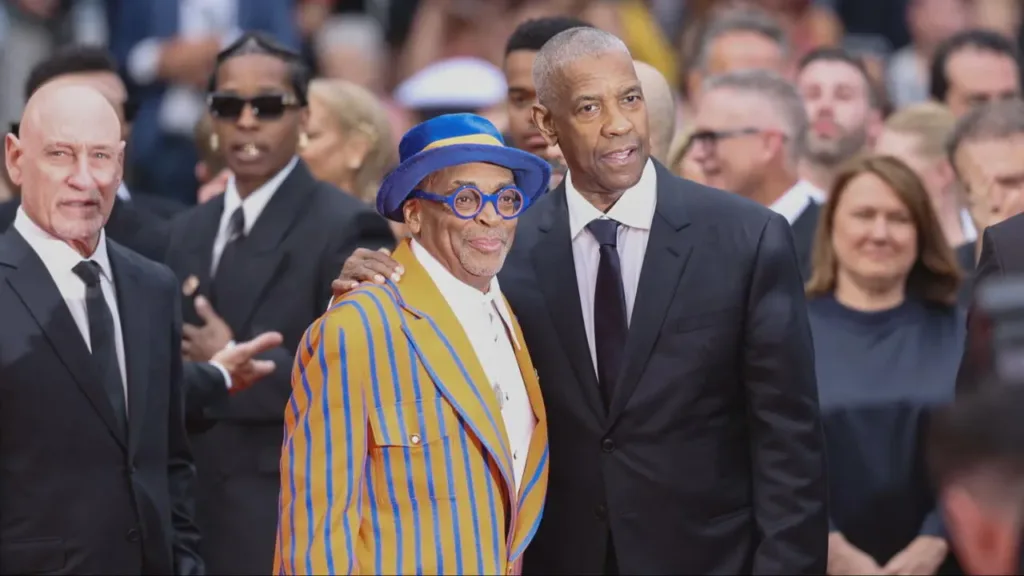Spike Lee arrived at Cannes this year to premiere Highest 2 Lowest alongside Denzel Washington, only to find himself serenading beachgoers with Rodgers & Hammerstein classics when questions turned to his next venture—a movie musical. The informal gathering at Carlton Beach, soundtracked by James Brown’s “The Boss,” took an unexpected turn when Lee, sunglasses on and feet in the sand, broke into “Oh, What a Beautiful Mornin’,” before deflecting talk of adapting the legendary songwriting duo’s work for the screen.
Lee’s reluctance surprised onlookers. Festival-goers had hoped for insight into his proposed musical project, first reported by Deadline in mid-May. Instead, he laughed off suggestions—“maybe we’ll tackle ‘The Surrey with the Fringe on Top’ next,” he quipped—then tuned out, returning to reciting favorite lines from Oklahoma! without committing to any details. Social media lit up with clips of Lee’s impromptu performance, reigniting speculation that he plans to bring Rodgers & Hammerstein’s golden-age stage works to the big screen.
The Cannes screenings themselves were a triumph. Highest 2 Lowest, Lee’s English-language remake of Akira Kurosawa’s High and Low, premiered out of competition on May 19, marking Denzel Washington’s long-awaited Croisette debut. Cannes organizers even reshuffled the schedule to accommodate Washington’s Broadway commitments, honoring him with a surprise honorary Palme d’Or just before the screening. Yet when the conversation shifted from Kurosawa to show tunes, Lee preferred to croon rather than elaborate on casting, financing or studio interest in a Rodgers & Hammerstein film.
Lee’s fascination with musicals is hardly new. In 2020 he announced plans to direct a“, dancin’, all singin’ musical” based on the discovery and marketing of Viagra, co-written with Kwame Kwei-Armah and set to feature original songs by Stew Stewart and Heidi Rodewald. Initially titled Rise and eyed for early 2023 production, the project—informally dubbed Boner—has encountered delays. As late as May 2025, Lee reaffirmed his commitment to getting it made, telling Variety’s Rebecca Keegan, “that’s something I’ve got to get made. Got to get made”.
His musical ambitions extend beyond cinema. Lee has long discussed adapting Do the Right Thing into a Broadway musical, tapping into the stage’s immediacy to explore racial tensions in Brooklyn, and in 1988 he directed School Daze, blending college life drama with vigorous dance numbers at historically Black colleges. Despite mixed reviews, School Daze remains a touchstone for integrating socially conscious themes with choreographed spectacle.
Yet translating stage musicals to film presents unique challenges. Rodgers & Hammerstein defined the “golden age” of American musical theatre, crafting emotionally rich stories—Oklahoma!, Carousel, South Pacific, The King and I and The Sound of Music—that balanced narrative depth with melodic invention. Hollywood adaptations have varied in success: The Sound of Music (1965) became the highest-grossing film of its era, while Flower Drum Song (1961) lost money despite its groundbreaking majority-Asian cast. Rights to these works remain tightly controlled by the Rodgers & Hammerstein estates and Concord Theatricals, which license grand rights for musical performances and synching of songs.
Moreover, the catalogs themselves hold immense value. According to Forbes, the Rodgers & Hammerstein songbook ranks as the third-most valuable music catalog globally, estimated at $350 million behind only the Beatles and Michael Jackson. Securing film rights would require negotiating with rights holders accustomed to stage licenses, plus managing strict approvals over script and score, as well as potential profit-sharing agreements. Industry insiders note that even major studios tread carefully when adapting such revered material.
Still, the appetite for movie musicals has surged in recent years. Films like In the Heights, Annette and Spielberg’s West Side Story (2021) have demonstrated both commercial viability and critical acclaim, signaling renewed audience interest. Critics argue that modern musicals must blend innovative storytelling with cinematic flair to avoid feeling nostalgic pastiches. As The New Yorker observed, the genre’s resurgence requires directors who can honor tradition while reimagining musical numbers for a 21st-century audience.
At Cannes, Lee’s crooning was as much performance art as casual conversation. It underscored his enduring love for music and dance, yet revealed little about production timelines or collaborators for his rumored Rodgers & Hammerstein adaptation. When pushed, Lee merely smiled and returned to “Oh, What a Beautiful Mornin’,” leaving festivalgoers to ponder whether he was signaling genuine intent or simply indulging in a spontaneous moment of joy.
Behind the scenes, Lee’s 40 Acres and a Mule Filmworks has developed a diverse slate, from documentaries to high-profile dramas. But a full-scale musical would mark a departure. If realized, it could place him alongside Robert Wise, Vincente Minnelli and George Cukor—directors who once brought Broadway hits to life on celluloid. Whether Lee will navigate the complex web of musical rights, composer estates and studio expectations remains to be seen.
For now, the story continues to unfold. Lee returns to New York for Broadway obligations, while industry watchers await his next announcement. In the meantime, the echoes of Rodgers & Hammerstein linger on Carlton Beach, carried on the breeze of the Riviera—a reminder that musical theatre and cinema remain entwined, and that Spike Lee, ever the showman, may yet take up the baton.
